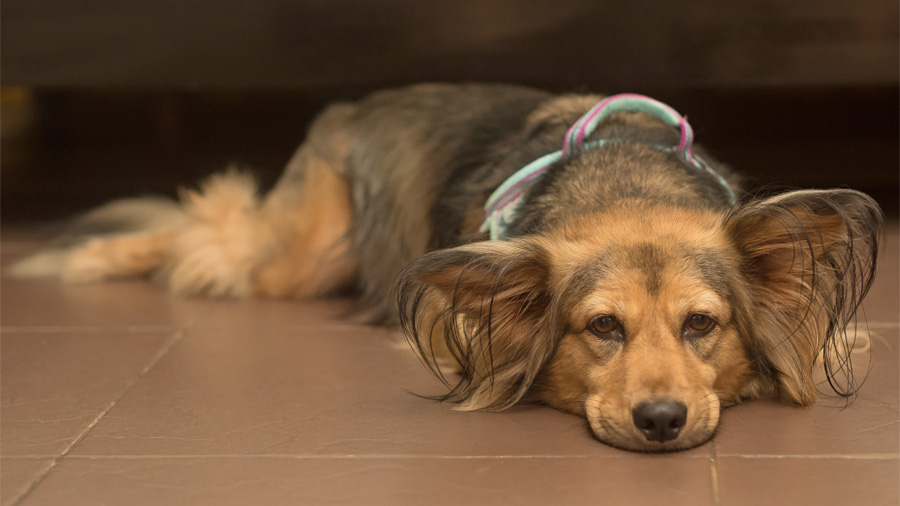Fractured teeth always merit a trip to the veterinarian
Teeth are amazingly strong! Nevertheless, when you consider that teeth are essential tools for your cat or dog, used not only for eating but for playing and picking things up, it’s not surprising that veterinarians routinely see broken teeth in their patients.
![[Dr. Katherine Kling with a patient]](https://vetmed.illinois.edu/wp-content/uploads/2021/04/pc-fracture-kling.jpg)
(When teeth are damaged due to trauma, such as bite wounds or being hit by a car, the teeth are generally treated after more serious problems, like jaw fractures, have been addressed.)
Complicated or Uncomplicated Fractures
According to Dr. Kling, commonly fractured teeth include the fang-like canine teeth in dogs and cats (yes, cats have canine teeth!) and the carnassial teeth in dogs. The carnassial teeth are the largest teeth in your pet’s mouth, paired top and bottom toward the back of the mouth; these teeth evolved in many carnivore species to shear the flesh off prey.
Dr. Kling categorizes broken teeth as complicated and uncomplicated fractures. Either way, the problem should be promptly evaluated by a veterinarian to save the tooth, in some cases, and to ensure that the pet is not in pain, in all cases.
“A complicated fracture occurs when the crown of the tooth is fractured and the pulp is exposed,” she says. “If there is not intervention, the tooth will die.”
Uncomplicated fractures do not involve the pulp (the part of the tooth that supplies nutrients to the tooth) and may heal. However, it is important to understand that fractured teeth can be quite painful and always merit a prompt visit to the veterinarian.
Vital Pulp Therapy
Dr. Kling explains “If you notice a complicated fracture right away, there is a chance that the tooth can be saved through vital pulp therapy.”
![[X-ray of canine tooth with fracture]](https://vetmed.illinois.edu/wp-content/uploads/2021/04/pc-dental-x-ray.jpg)
Root Canal or Extraction
If time has elapsed since the tooth was damaged, two options remain for a tooth with a complicated fracture: a root canal or extraction of the tooth. Your veterinarian can help you decide between these two therapies.
During a root canal, all of the pulp is removed from the tooth and replaced with a substance that allows the tooth to function comfortably without the risk of infection or pain. If surgical extraction of the tooth is chosen, animals typically live happily with fewer teeth.
“A painful tooth is providing no benefit to a pet and it is likely to cause problems,” says Dr. Kling. “Most animals eat much more comfortably once the painful tooth is removed.”
Uncomplicated fractures usually do not need an aggressive intervention, but should still be seen by a veterinarian. While there is a lower risk of the tooth dying, the tooth may be sensitive. Additionally, the tooth may need some restoration or smoothing of jagged edges to ensure that it does not cause problems for the pet.
Even Baby Teeth Need Attention
Even if your pet is young enough that the fractured tooth will eventually fall out and be replaced by the adult tooth, a veterinarian needs to evaluate the problem.
“Since permanent teeth are very close to their deciduous counterparts, pulp exposure on a baby tooth can result in damage to the bud of the permanent tooth below,” warns Dr. Kling.
While tooth fractures cannot always be avoided, choosing appropriate toys can help prevent fractured teeth in dogs that like to chew. Soft rubber or stuffed toys are much safer than hard plastic toys, antlers, or bones.
“Dental issues are sometimes overlooked because they are not life limiting, but they are most definitely quality-of-life limiting, so it is important to include dentistry in your pet’s care,” says Dr. Kling. “We are fortunate to have the knowledge and resources to help provide our pets with comfortable and healthy mouths.”
If you have any questions about tooth fractures, contact your local veterinarian or the dentistry service at the University of Illinois Veterinary Teaching Hospital.
By Hannah Beers

![[cat yawning and showing teeth]](https://vetmed.illinois.edu/wp-content/uploads/2021/04/pc-fractured-teeth-kling.jpg)


